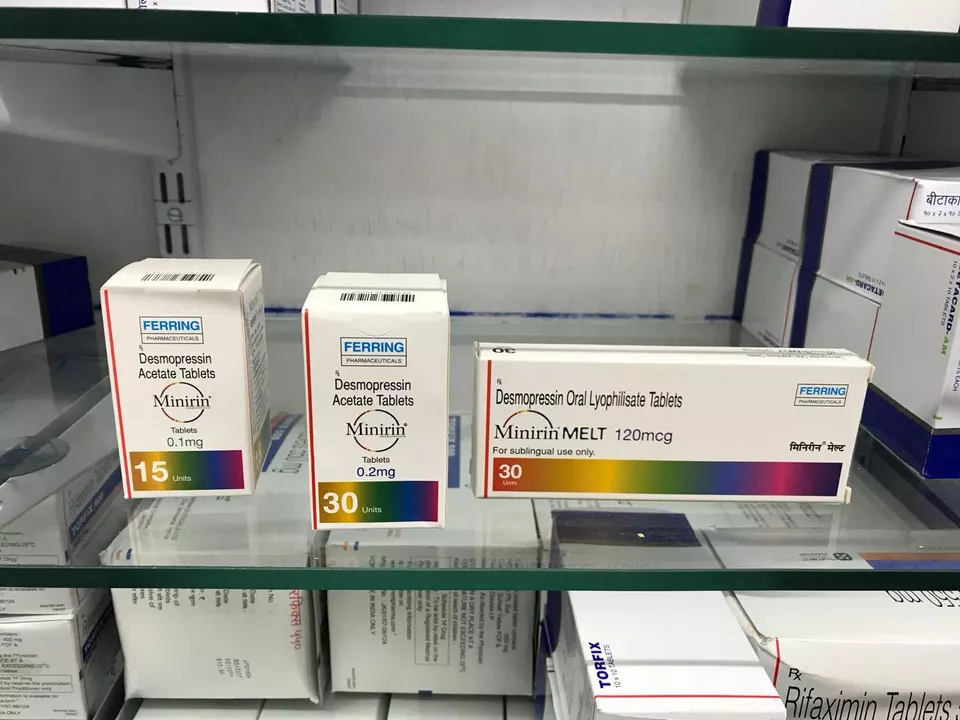Desmopressin – What It Is, How to Use It, and Safety Tips
Desmopressin is a synthetic hormone that mimics the body’s natural antidiuretic hormone (ADH). Doctors prescribe it mainly for conditions where the kidneys don’t hold onto water properly. If you’ve been told to take a nasal spray, tablet, or injection, this guide will break down why, how much, and what to watch out for.
Key Uses of Desmopressin
The most common reasons people take desmopressin are:
- Central diabetes insipidus (CDI): a rare disorder where the brain can’t signal the kidneys to retain water.
- Nocturnal enuresis (bedwetting) in kids and adults: it reduces nighttime urine output.
- Bleeding disorders such as mild hemophilia A or von Willebrand disease: it helps blood clot by raising factor VIII levels.
In each case, the goal is to keep fluid balance steady without overloading the body with water.
Dosage Basics and Who Should Watch Out
Desmopressin dosing varies a lot. For CDI, adults often start with 0.1 mg taken two or three times daily as a tablet; children get weight‑based doses that are much smaller. The nasal spray is usually 10–20 µg once in the morning and again at night. When it’s used for bedwetting, the dose might be as low as 0.05 mg before bedtime.
Because desmopressin makes you retain water, doctors stress the importance of “fluid restriction.” That means limiting how much you drink in the few hours after your dose—typically no more than ½ to 1 liter. Skipping this step can lead to low sodium levels (hyponatremia), which feels like headache, nausea, or even seizures.
People with severe kidney disease, uncontrolled high blood pressure, or a history of hyponatremia should avoid desmopressin unless a doctor monitors them closely. Pregnant women can use it for certain bleeding disorders, but only under medical supervision.
If you miss a dose, take it as soon as you remember—unless it’s close to the next scheduled time. In that case, skip the missed one; doubling up raises the risk of water overload.
Side Effects, Interactions, and Buying Safely
The most common side effects are mild: headache, nausea, or a stuffy nose (if you use the spray). More serious concerns revolve around low sodium. If you notice sudden confusion, muscle cramps, or swelling, call your doctor right away.
Desmopressin can interact with certain drugs—especially other blood thinners, diuretics, and some antidepressants. Always list every medication you’re taking before starting desmopressin.
When you need to order desmopressin online, choose a reputable pharmacy that requires a prescription. Look for sites that display a pharmacist’s contact info, have secure https connections, and show clear pricing. Our tag page also lists articles on buying meds safely, so check those out if you’re unsure where to shop.
Bottom line: desmopressin works great when used correctly, but it demands careful dosing and fluid control. Talk openly with your healthcare provider, follow the prescribed schedule, and keep an eye on any warning signs. With that approach, you’ll get the benefits without unnecessary risks.
Desmopressin for the Treatment of Polydipsia: A Comprehensive Guide
In my latest blog post, I explore the use of Desmopressin for the treatment of polydipsia, a condition characterized by excessive thirst and fluid intake. I discuss the causes of polydipsia, and how Desmopressin, a synthetic hormone, can help regulate the body's water balance. I also delve into the possible side effects and precautions to consider when taking this medication. Additionally, I share some tips on managing polydipsia and maintaining a healthy lifestyle. Overall, this comprehensive guide provides valuable insights into the use of Desmopressin as a treatment option for those struggling with polydipsia.
read more

